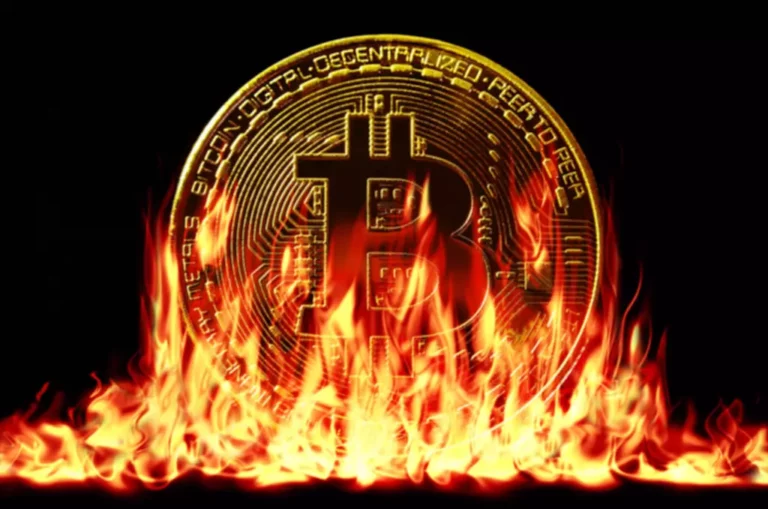The CPU then reads or writes the information to memory, which could be a time-consuming course of, especially when dealing with giant quantities of knowledge. Instead of going via the CPU, the gadget sends its knowledge request on to the direct memory access controller. Interrupts are signals generated by I/O devices to point that they require attention from the CPU. When an interrupt is generated, the CPU is interrupted from its current task and begins executing the suitable interrupt service routine (ISR) to handle the request from the I/O system.
The I/O Processor can execute input/output operations whereas the CPU is busy with different tasks, thus making the system extra environment friendly. I/O Processor Interfaces are communication channels through which I/O gadgets and the I/O processor talk with one another. There are various interfaces out there that permit several types of gadgets to join with the I/O processor. The first element is the I/O interface, which is responsible for the physical connection between the I/O gadgets and the I/O processor.

DMA controller is a management unit, part of I/O device’s interface circuit, which may transfer blocks of information between I/O devices and primary reminiscence with minimal intervention from the processor. In abstract, DMA-controllers are higher fitted to transferring massive amounts of data and offloading the CPU, whereas interrupts are better suited for quick responses. The alternative of which to use depends on the system’s specific necessities and the trade-offs between efficiency and response time. Overall, proper synchronization is essential to ensure that the I/O processor operates smoothly and without conflicts, resulting in sooner and extra efficient information transfers.
Benefits And Downsides Of Dma Controller
Common design concerns when utilizing direct reminiscence access controller embrace reminiscence mapping, buffer allocation, and synchronization mechanisms to forestall information corruption. In this method, the I/O system sends an interrupt sign to the CPU to point that it has data able to switch. The CPU then suspends the present task and transfers the info between the I/O system and reminiscence. Input Output Processor, Once the switch is complete, the CPU resumes the suspended task.
- The SATA interface supplies high-speed data switch rates and helps hot-plugging, Input Output Processor, which implies that devices can be related or disconnected without the need for rebooting the system.
- In this mode, the current tackle register of channel 0 is used to level the supply address and the current handle register of channel zero is used to level the vacation spot tackle.
- Each I/O system has its distinctive perform within the general operation of the pc system.
- Usually, processors control all the method of transferring knowledge, right from initiating the switch to the storage of data on the vacation spot.
- Efficient synchronization and error dealing with mechanisms are crucial in ensuring easy data transfer and avoiding conflicts.
- When a tool such as a hard disk or network interface needs to switch information to or from reminiscence, it sometimes has to ship a request to the CPU.
To velocity up the switch of information between I/O units and memory, DMA controller acts as station master. The direct reminiscence access controller then takes control of the bus and begins transferring data Direct Market Access between the gadget and reminiscence. The CPU is simply concerned in setting up the DMA-controller and receiving an interrupt when the switch is complete.
Input Output Processor- What Is It & How Does It Work? Datatrained
This point suggests the proper time to buy a stock as the costs will go up after that time. Sometimes the costs run parallel to the X axis (horizontal) for some period of time in that scenario the transferring average of those days depict a sideways development. For instance, a sound card may require entry to information stored in the pc’s RAM, but since it has the power to course of the information, it might use DMA to avoid the CPU.
For that, DMA sends request to the microprocessor in form of HOLD signal by the I/O gadget. When microprocessor receipt of such request, the microprocessor relinquishes the address and data buses. The I/O gadget withdraws the request when the info switch between the I/O system and external reminiscence will complete.

The Direct Memory Access (DMA) data switch technique mainly used for bulk knowledge transfer from I/O gadgets to microprocessor or vice-versa. In this methodology I/O gadgets are allowed to transfer the information on to the exterior memory with out being routed by way of accumulator. For this purpose the microprocessor relinquishes the management over the data bus and tackle bus.
This allows the CPU to carry out different duties whereas the data switch is happening, improving total system performance. Firstly, direct reminiscence access controller can considerably enhance system efficiency by offloading the CPU from knowledge transfer duties. The CPU could be free to perform different duties whereas the DMA-controller takes care of knowledge transfers between devices and reminiscence. This results in sooner information transfer charges and elevated overall system performance.
However, it requires more complex hardware and software program support, which may make it more difficult to implement. Fourth step, on receipt of this sign (HLDA), the DMA controller sends a DMA acknowledge signal (DMACK) to the I/O device. If the value of a inventory is falling, traders anticipate it to succeed https://www.xcritical.in/ in a sure level referred to as ‘assist’ earlier than buying. This means if on a DMA chart the line of actual price starts falling and eventually bounces off after touching the road of moving common, the purpose of contact represents the area of support.
Dma Charts And Periodicity
Different direct memory entry controller can be used to optimize knowledge transfer performance, minimize CPU utilization, and guarantee the easy transfer of knowledge between gadgets and reminiscence. Another advantage of utilizing a direct memory entry controller is improved information transfer efficiency. Data switch between units and reminiscence is streamlined, and the DMA-controller ensures that the info transfer is error-free.

Programming a direct memory entry controller requires information of the direct reminiscence access controller’s programming interface and the system architecture. Several programming languages and improvement instruments can be found to program a DMA, such as C/C++, assembly language, and direct reminiscence access controller-specific APIs. Different I/O units might have completely different sets of commands, Input Output Processor, and the IOP should support those commands to speak with the devices correctly. Input Output Processor, The use of instructions in IOP is determined by the type of I/O system and the data transfer approach used. Overall, DMA performs a vital function in bettering the efficiency and efficiency of Input Output Processors by optimizing information switch between I/O units and major memory. Which helps to generate the addresses for the data to be transferred from the I/O units.
It requires data of the DMA-controller’s programming interface and the system architecture. Common issues when utilizing a DMA controller embody reminiscence mapping, buffer allocation, synchronization mechanisms to forestall data corruption, and compatibility points between units and hardware. These issues can be overcome using strategies corresponding to scatter-gather DMA, circular buffers, deciding on suitable gadgets and hardware, and synchronization mechanisms. The direct memory access (dma) controller operates through the use of DMA channels, which are particular paths for information transfer between the system and memory. These channels are programmed by the CPU with the required parameters, such as the supply and vacation spot addresses, and the transfer measurement.
Dma (direct Memory Access) And Its Position In Input Output Processor
Moving average with respect to a stock represents the movement in common value of the the inventory with respect to time. As per definition, DMA is a straightforward moving average that has been adjusted ahead or back in time to suit a line of development. Moving common indicator helps in tracking the dynamic costs of shares extra precisely. The CPU and reminiscence share a system bus, and the I/O Processor communicates with them via a separate I/O bus. The I/O Processor can learn and write to memory utilizing DMA, and it could communicate with the CPU via interrupts. In general, interrupt-driven I/O is preferred over polling for most functions, as it is extra efficient and reduces CPU usage.
The I/O interface contains circuits that convert signals between the device and the processor, and it also handles interrupt alerts from the units. Third step, on receipt of the DMA request, the microprocessor sends an acknowledge sign (HLDA) to the DMA controller. First step, the peripheral system sends the request sign (DMARQ) to the DMA controller. The several sorts of DMA controllers embrace single-channel DMA, multi-channel DMA, cascaded DMA, demand-paged DMA, and cycle-stealing DMA. In conclusion, each polling and interrupt-driven I/O have their benefits and drawbacks, Input Output Processor, and the choice is decided by the specific requirements of the system.
Like all technical statistical instruments, DMA also has sure limitations and can’t be used as a common measure to discover out commerce actions. A DMA isn’t at all times accurate at detecting pattern reversals or ranges of support and resistance, like many different technical evaluation indicators. When the road of worth is above the line showing DMA, it’s extra likely to be in an uptrend or no much less than to be above common.
The data is then transferred by the DMA controller, liberating up the microprocessor to work on other processing duties. When a tool needs to send or receive data over the Micro Channel bus, it should compete with all the other devices vying for control of the bus. Instead, the I/O system that’s delivering or receiving knowledge (the DMA slave) engages in arbitration for control of the BUS, not the DMA controller. But when the central arbitration management point agrees to the DMA slave’s request, the DMA controller takes over the bus. In this mode, the current tackle register of channel zero is used to point the supply address and the present address register of channel zero is used to level the destination address. Current tackle registers are incremented or decremented after each knowledge transmission depending on the parameters at the time.
Since the CPU is not involved in each data switch, it could focus on other duties, bettering the general effectivity of the system. A DMA controller is a hardware device that is used to transfer knowledge between units without involving the CPU. It is a specialised microcontroller that acts as a mediator between the system and the reminiscence, allowing for data to be moved quickly and effectively. Overall, the structure of an I/O Processor is designed to deal with the transfer of data between the I/O devices and memory effectively, allowing the CPU to give consideration to other tasks.
By taking these design considerations under consideration, designers can make certain the environment friendly and protected operation of the system. DMA-controllers are particularly helpful in techniques that deal with large amounts of data, such as video and audio streaming applications.
The USB interface uses a regular protocol for communication, and the operating system has built-in drivers for USB gadgets, which makes it simple to connect and use these gadgets with the I/O processor. Programming a DMA controller includes setting up the DMA registers, allocating reminiscence for the switch buffer, and configuring the device-specific registers. This may be carried out using DMA controller-specific libraries or by directly accessing the DMA registers within the system. There are a quantity of kinds of I/O devices, including keyboards, mice, printers, scanners, cameras, microphones, audio system, and storage devices such as onerous drives and flash drives.
